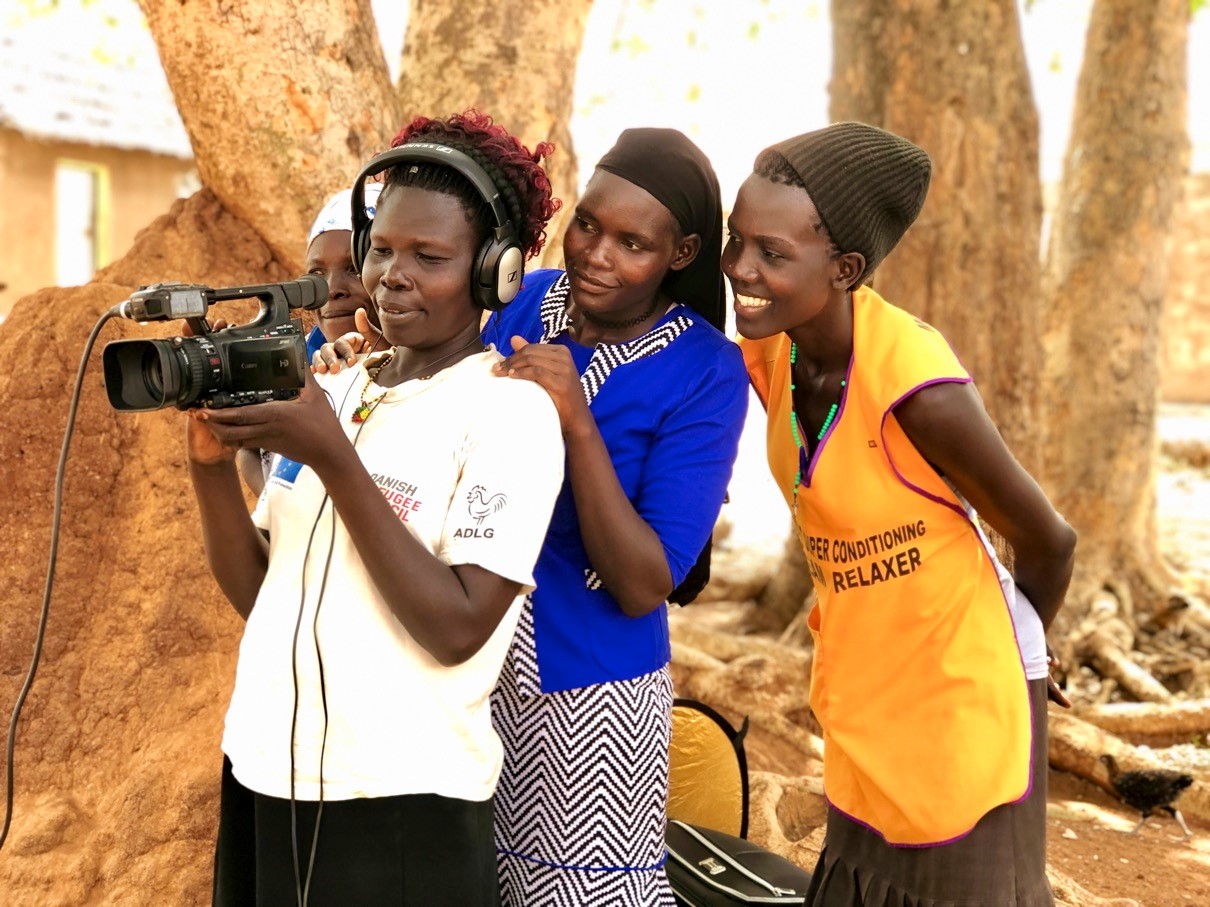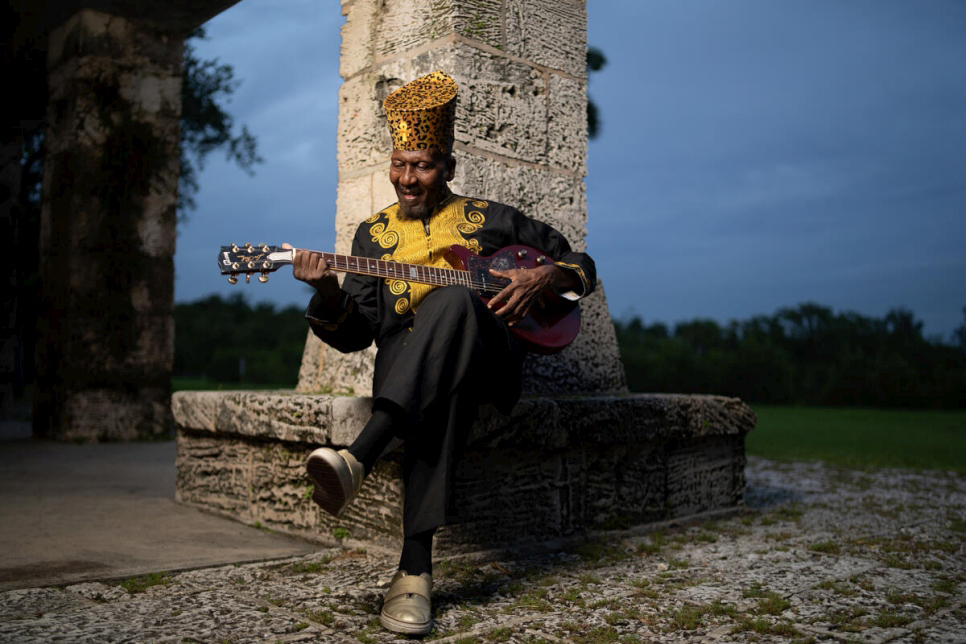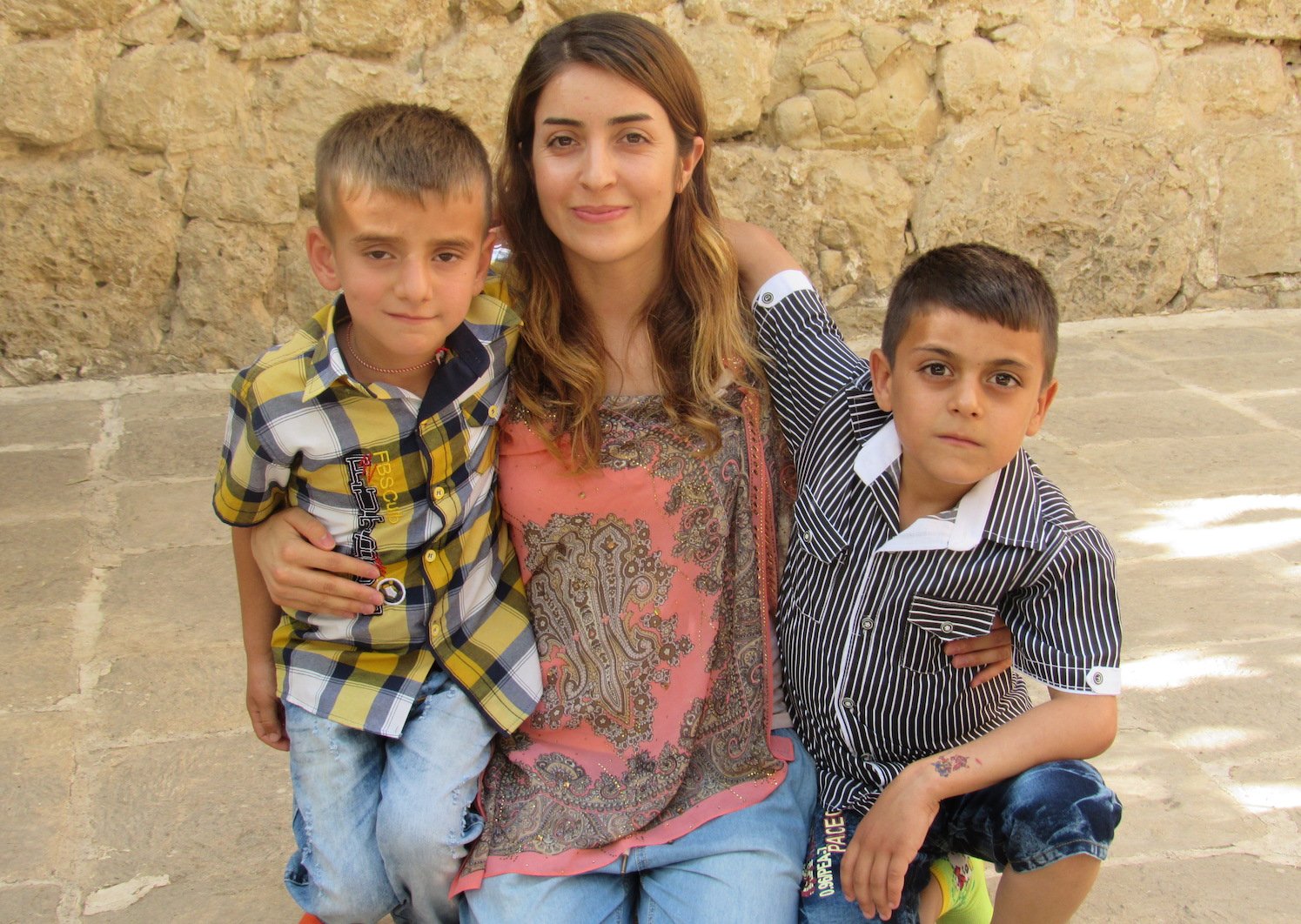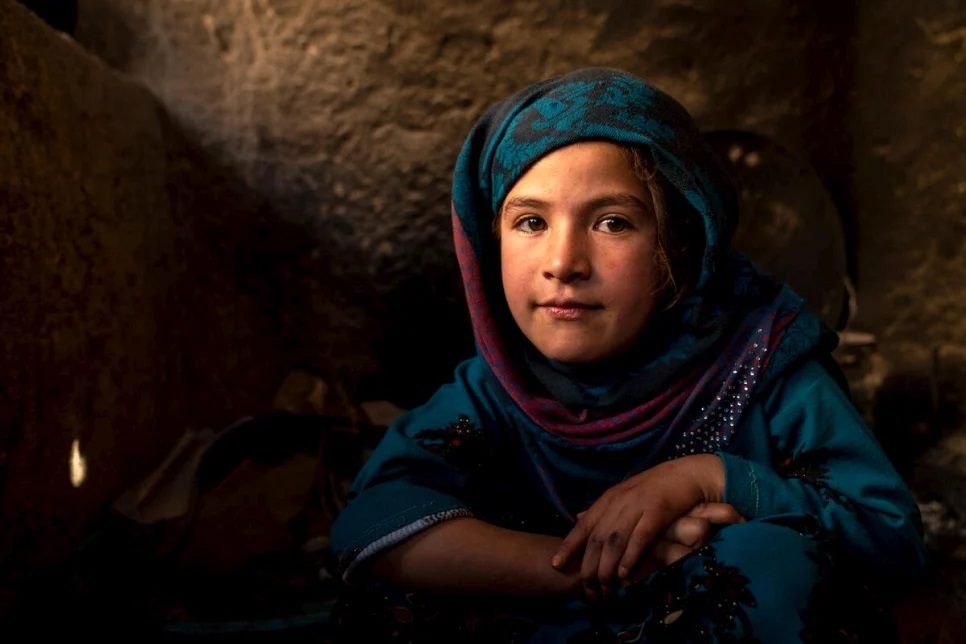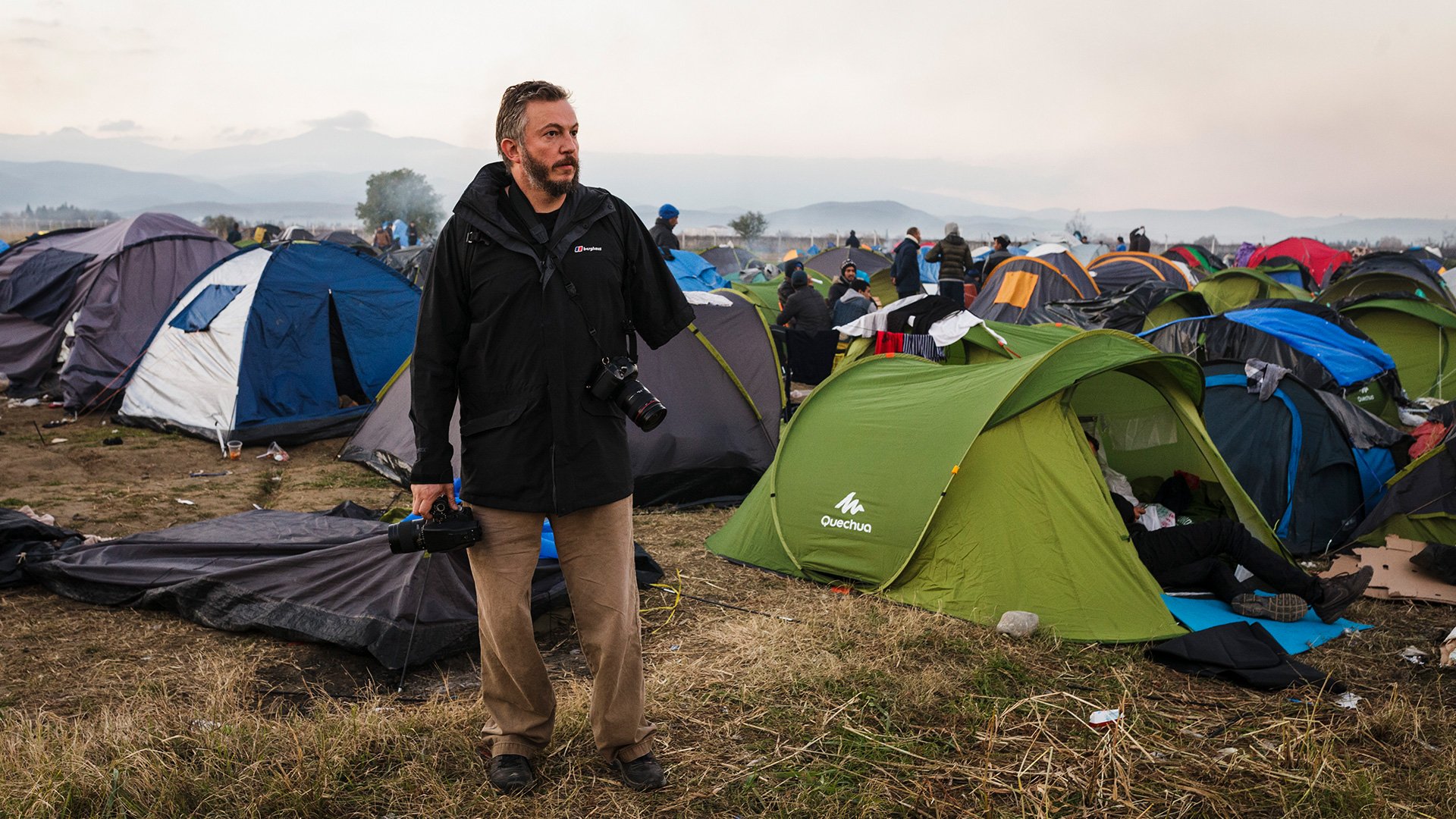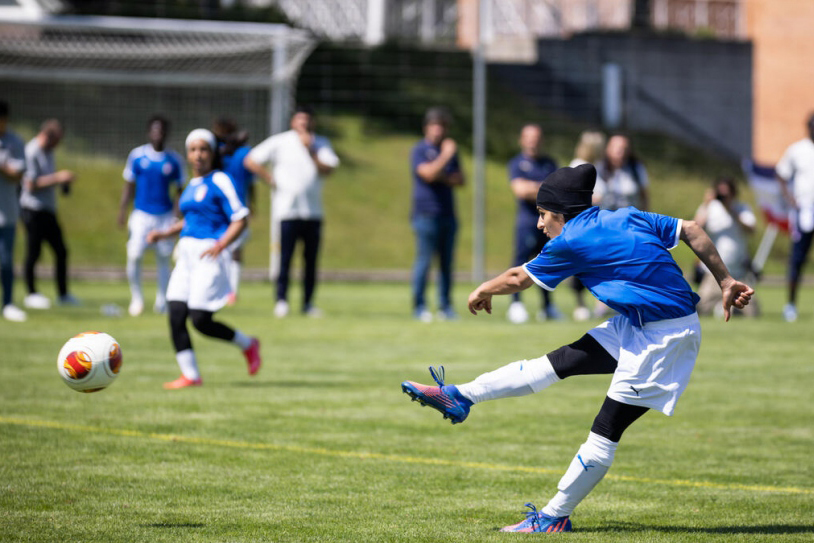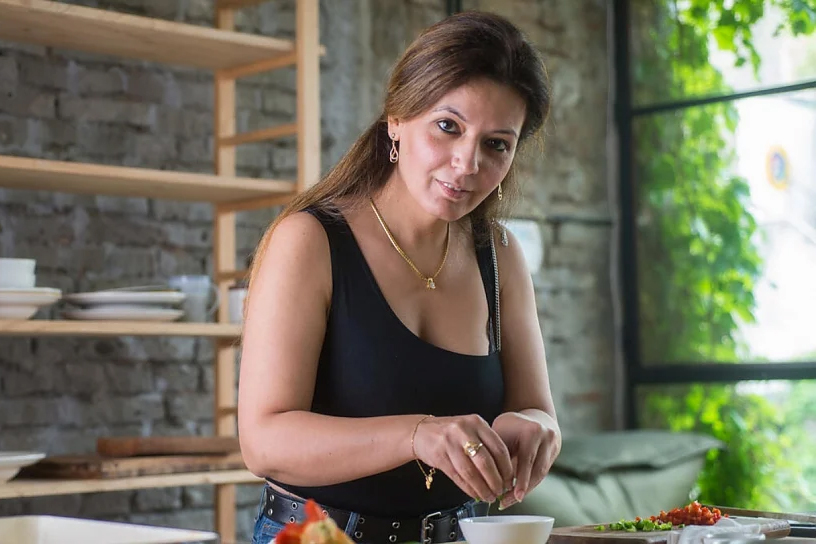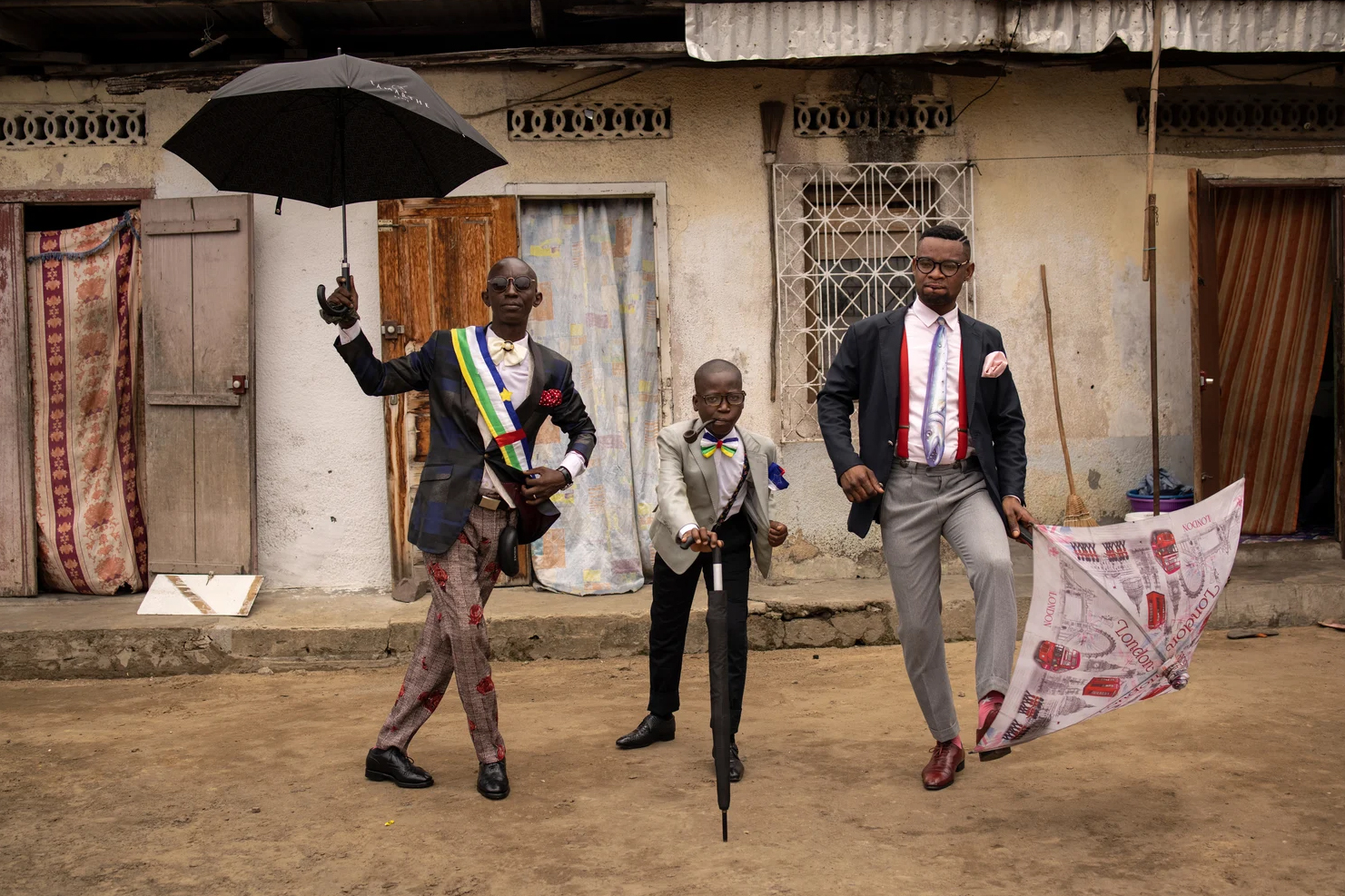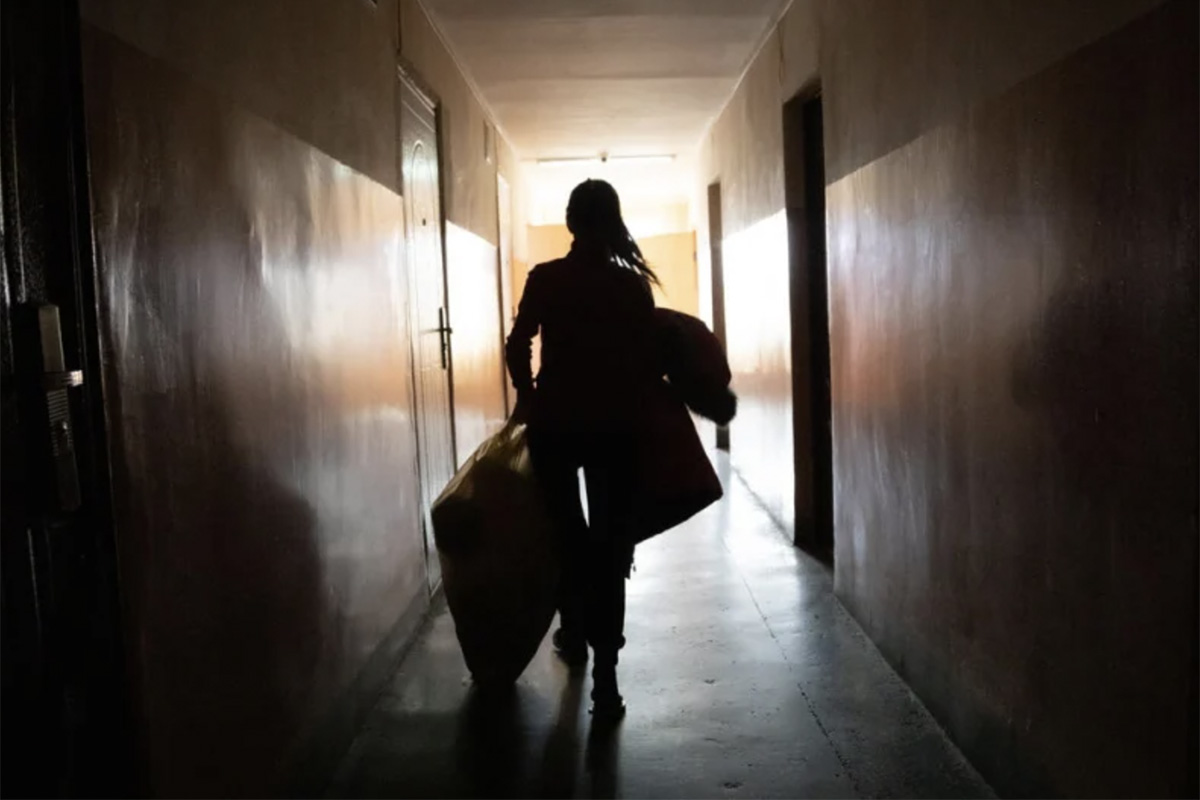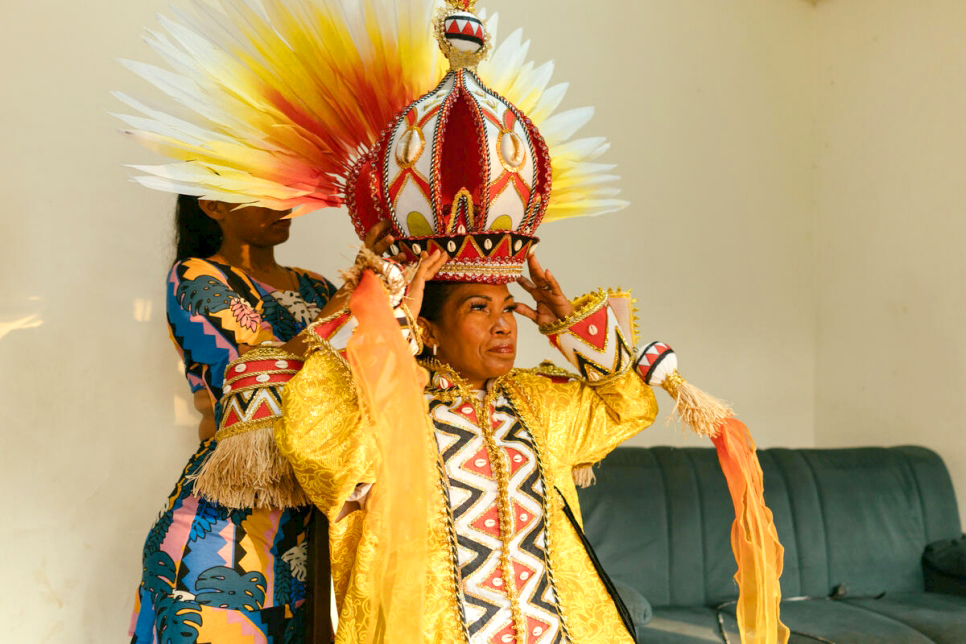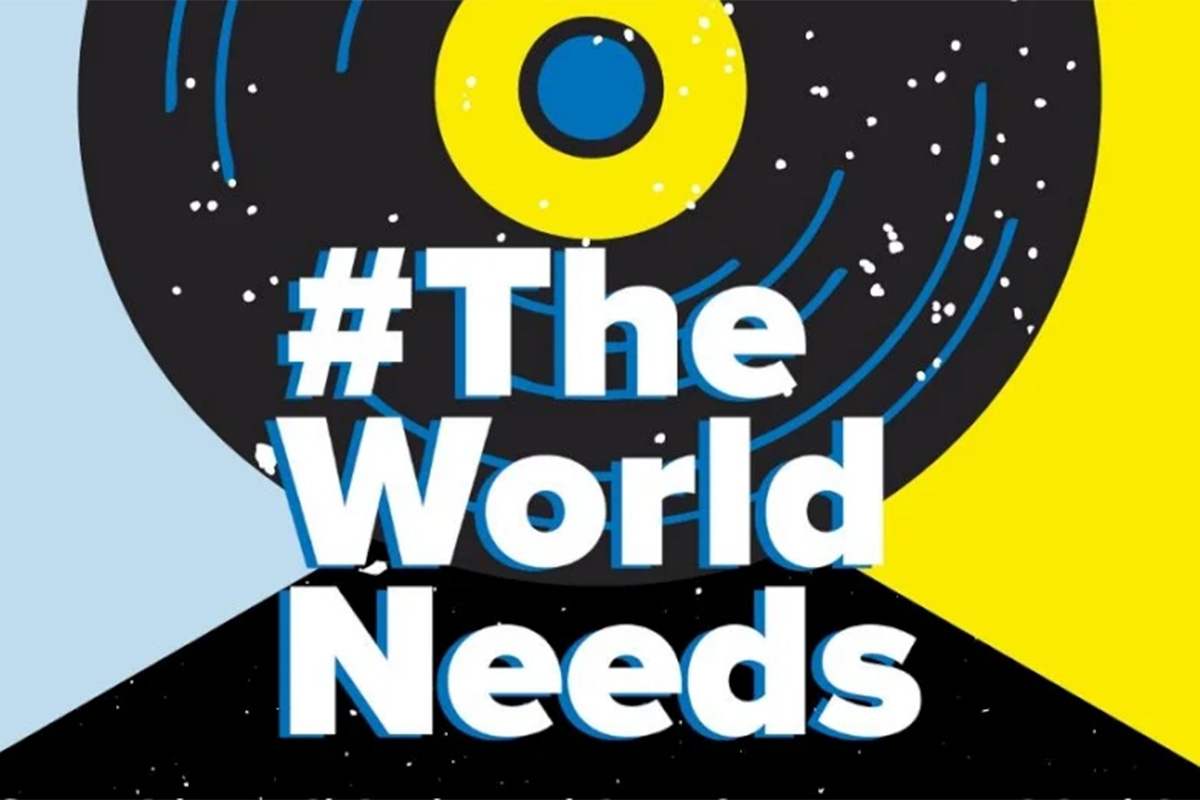Though women and children make up 81 per cent of the nearly 1.53 million refugees in Uganda, refugee settlement leadership has historically lacked women’s representation. Cultural barriers, coupled with limited knowledge on rights and access to education, kept women from participating in decision-making processes. In 2018, UN Women began providing trainings for the women and youth of Adjumani and Yumbe districts, which host 30.1 per cent of Uganda’s total refugee population. The trainings included instruction in literacy, numeracy, women’s rights, leadership and life skills development, public speaking, debating and radio presentation. The results are striking.
UNHCR
Jimmy Cliff shines a light on people forced to flee and partners with UNHCR to create a portal to help refugees. “Refugees” continues Cliff’s long tradition of penning thought-provoking anthems.
"We were surrounded by the Islamic State. And we had no weapons even to fight. We had nothing. We were left alone." Adiba Qasim has shown extraordinary courage and resilience. She narrowly escaped when her village was stormed by Islamic State militants who killed and enslaved thousands of Yazidis. This is her story.
Returning to northern Iraq in 2015, Adiba threw herself into humanitarian work, aiding survivors who had been enslaved by the militants. In this special bitesize episode she reflects on the horrors she witnessed, on battling survivors’ guilt, and on her motivation to help others.
Over the past year, parts of Afghanistan have become safer, but the country is in the grip of a humanitarian crisis. Here are five things to know about Afghanistan and how UNHCR is trying to help.
Opened on 28 July 2012 and still home to 80,000 people, Za’atari refugee camp has become a symbol of the long-running Syrian refugee crisis. Read the full story from UNHCR.
“It was a miracle I survived that day. I was just lucky, it just wasn’t my day to go.” Giles Duley used to live the rock’n’roll life of a fashion photographer, but now travels the world’s war zones documenting the lives of those caught up in conflict. He stepped on a landmine while working in Afghanistan and lost three of his limbs, and very nearly his life. This is his story. Incredibly fortunate to be alive, few of Giles’ family and friends believed that he would work again after the accident. But he knew otherwise. Photographing Syrian refugees for UNHCR on the Greek islands, he found his way back into life and work. In this special bitesize episode, Giles Duley reflects on his drive to help others, tell life-changing stories, and on finding the strength to return from rock bottom. “I always say it was those Syrian refugees … that gave me my life back. That’s why my commitment to telling the stories of refugees is a personal one because I owe them everything.“ This is a BiteSize episode excerpt from S1-Episode 4.
Fatema is one of 80 players who took part in the recent inaugural UNITY EURO Cup, an eight-team tournament organised by UEFA, the Union of European Football Associations, and UNHCR, the UN Refugee Agency, at the Colovray Stadium in Nyon, Switzerland. As a former striker for the Afghan national women’s team, she played 15 games and scored five goals for her country before fleeing in the aftermath of the Taliban’s takeover in 2021. Each team consisted of a mix of refugee and national amateur players, both female and male.
Most refugees from Ukraine hope to return home as soon as possible but around two-thirds expect to stay in their host countries until hostilities subside and the security situation improves, according to a new report by UNHCR. The survey showed that 16 percent of Ukrainian refugees in the Czech Republic, Hungary, the Republic of Moldova, Poland, Romania and Slovakia were planning to return to Ukraine in the coming two months, with 15 percent of those planning to stay temporarily to visit family, get supplies or help relatives evacuate.
Food can be a powerful tool for integration, but for many people who have had to flee, food is also a constant concern. According to a recent survey by UNHCR, 48 per cent of refugees in the Americas reported eating only twice a day, while 6 per cent said they were able to eat only one meal a day. In a new cookbook, refugees and displaced people in the Americas and the Caribbean share their stories and the flavours of home – past and present. Each recipe in the book combines flavours from displaced people’s countries of origin and their new homes.
Francis Mbéré never thought he would enjoy life again after what he endured in his home country, the Central African Republic. But nine years after fleeing brutal attacks, he proudly parades the streets of his adopted hometown, Brazzaville, capital of the Republic of the Congo, with his friends and fellow “sapeurs.” The sapeurs are followers of a fashion and cultural movement known as La Sape – the Society of Ambiance Makers and Elegant People (Société des Ambianceurs et des Personnes Élégantes in French) – that gained popularity in the 1960s in Brazzaville and Kinshasa, capital of the Democratic Republic of the Congo. The movement was inspired by 19th century French dandyism. Francis strikes a pose outside his home, joined by his son Séverin and his friend Crèche, aka Parabola.
During the first quarter of 2022, more than 18,000 refugees and migrants crossed the Mediterranean to reach Europe. Altogether, 2.3 million have taken this same journey in the past eight years. Between 2014 and 2021, over 24,400 people have lost their lives or gone missing trying to cross the Mediterranean Sea. Many others have suffered unspeakable violations of their human rights - at a scale likely higher and more severe than the already alarming estimates. This is a widespread, longstanding and largely overlooked tragedy.
According to new data from UNHCR, the number of forcibly displaced people worldwide rose towards 90 million by the end of 2021, propelled by new waves of violence or conflict in countries including Ethiopia, Burkina Faso, Myanmar, Nigeria, Afghanistan and the DR Congo. In addition, the war in Ukraine has displaced 8 million within the country this year, and more than 6 million refugee movements from Ukraine have been registered. At over 1 per cent of the global population, the overall figure is equivalent to the 14th most populous country in the world.
The Salgueiro samba school, whose theme for this year’s parade was the fight against racism, invited 20 refugees as part of a partnership with UNHCR, to promote integration of refugees into the country. Refugees from Syria, Venezuela, Angola and DR Congo took part in perhaps the most Brazilian of all events – the all-night-explosion of music, drumming, and dancing that is Rio’s annual Carnival parade. Brazil is home to refugees from 88 countries and has received an estimated 325,000 refugees and migrants from Venezuela, in recent years.
UNHCR and TikTok launched a music campaign promoting solidarity with refugees globally. #TheWorldNeeds calls on creators to spread a message for safe and legal access to asylum for all.
In 2021, UNHCR challenged students to address the impact of COVID-19 on refugees, refugee women’s rights, refugees’ social inclusion and the use of technology to empower refugees. The best ideas have been turned into LEGO scenes by an artist.

